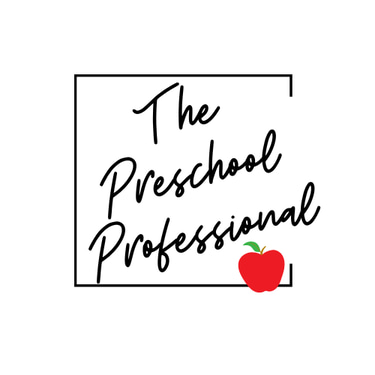Understanding Developmental Domains in Child Development
This blog post explores the five key developmental domains in child development: physical, cognitive, social, emotional, and language development. It highlights how each domain contributes to a child's overall growth and well-being, emphasizing the importance of supportive environments and activities that promote development. By understanding these domains, parents, educators, and caregivers can better support children to reach their full potential. The post is supported by research from notable psychologists such as Piaget, Vygotsky, and Erikson.
The Preschool Professional
7/15/20243 min read


Child development is a complex and multifaceted process that encompasses various domains. These developmental domains represent different aspects of growth and are interconnected, each contributing to a child's overall well-being. Understanding these domains is crucial for parents, educators, and caregivers to provide the necessary support and opportunities for children to thrive. In this blog post, we will explore the key developmental domains: physical, cognitive, social, emotional, and language development.
Physical Development
Physical development refers to the growth and changes in a child's body and motor skills. This domain includes two main areas:
Gross Motor Skills: These involve large muscle movements, such as crawling, walking, running, and jumping. Gross motor skills are essential for mobility and physical coordination. According to research, regular physical activity is crucial for developing these skills and promoting overall health (Timmons et al., 2007).
Fine Motor Skills: These involve smaller muscle movements, such as grasping objects, drawing, and writing. Fine motor skills are critical for tasks that require precision and hand-eye coordination. Activities like playing with building blocks, drawing, and cutting with scissors help children develop these skills (Cameron et al., 2012).
Physical development is foundational for a child's ability to explore and interact with their environment, impacting their independence and confidence.
Cognitive Development
Cognitive development involves the processes by which children learn to think, understand, reason, and solve problems. Key aspects of cognitive development include:
Memory: The ability to retain and recall information. Memory skills are essential for learning and academic success.
Attention: The ability to focus on specific tasks or information while ignoring distractions. Attention skills are critical for effective learning and problem-solving.
Problem-Solving: The ability to find solutions to challenges and obstacles. This involves critical thinking and creativity.
Language and Literacy: The development of communication skills, including understanding and using language, reading, and writing.
Jean Piaget's stages of cognitive development highlight how children's thinking evolves from simple reflex actions in infancy to complex, abstract reasoning in adolescence (Piaget, 1952). Providing stimulating and challenging activities that promote exploration and discovery is essential for cognitive development.
Social Development
Social development involves learning to interact with others and developing relationships. Key components of social development include:
Social Skills: The ability to communicate, cooperate, and resolve conflicts with others. These skills are essential for building and maintaining relationships.
Empathy: The ability to understand and share the feelings of others. Empathy is crucial for developing compassion and forming healthy relationships.
Social Norms: Understanding the rules and expectations of society and learning to behave appropriately in different social contexts.
Lev Vygotsky's sociocultural theory emphasizes the importance of social interaction and cultural context in learning and development (Vygotsky, 1978). Encouraging cooperative play, group activities, and positive social interactions helps children develop strong social skills.
Emotional Development
Emotional development involves understanding and managing emotions, developing self-awareness, and building self-esteem. Key aspects include:
Self-Regulation: The ability to manage one's emotions, behaviors, and impulses. Self-regulation is crucial for social interactions and academic success.
Self-Awareness: The ability to recognize and understand one's emotions, strengths, and weaknesses. Self-awareness is important for building self-esteem and personal growth.
Emotional Expression: The ability to express emotions appropriately. This involves understanding different emotions and learning to communicate them effectively.
Erik Erikson's psychosocial development theory highlights the importance of resolving emotional and social conflicts at different stages of life to build a healthy personality (Erikson, 1950). Providing a supportive and nurturing environment helps children develop emotional resilience and confidence.
Language Development
Language development involves acquiring the ability to understand and use language for communication. Key components include:
Receptive Language: The ability to understand spoken and written language. This includes listening skills and comprehension.
Expressive Language: The ability to express thoughts, feelings, and ideas through spoken and written language. This includes vocabulary, grammar, and sentence structure.
Literacy Skills: The ability to read and write. Literacy is fundamental for academic success and lifelong learning.
Language development is closely linked to cognitive development and is influenced by social interactions and environmental exposure. Encouraging conversations, reading aloud, and engaging in language-rich activities supports language development.
Conclusion
Understanding the key developmental domains provides valuable insights into how children grow and learn. Each domain is interconnected and contributes to a child's overall development and well-being. By recognizing and supporting these domains, parents, educators, and caregivers can create enriching environments that promote healthy growth and help children reach their full potential.
References
Cameron, C. E., Brock, L. L., Murrah, W. M., Bell, L. H., Worzalla, S. L., Grissmer, D., & Morrison, F. J. (2012). Fine motor skills and executive function both contribute to kindergarten achievement. Child Development, 83(4), 1229-1244. https://doi.org/10.1016/j.ecresq.2011.11.001
Erikson, E. H. (1950). Childhood and Society. Norton. https://www.simplypsychology.org/Erik-Erikson.html
Piaget, J. (1952). The Origins of Intelligence in Children. International Universities Press. https://www.simplypsychology.org/piaget.html
Timmons, B. W., Naylor, P. J., & Pfeiffer, K. A. (2007). Physical activity for preschool children--how much and how?. Canadian Journal of Public Health, 98(Suppl 2), S122-S134. https://doi.org/10.1139/H07-112
Vygotsky, L. S. (1978). Mind in Society: The Development of Higher Psychological Processes. Harvard University Press. https://www.simplypsychology.org/vygotsky.html
